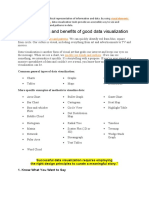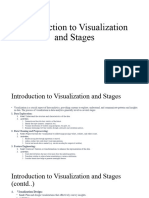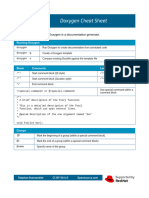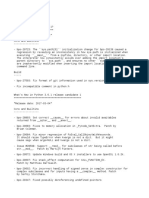0% found this document useful (0 votes)
34 views10 pagesVisualization The Power of Data Representation
The document provides an overview of data visualization, emphasizing its importance in presenting complex data in an understandable format to identify patterns and insights. It discusses various types of visualizations, the process of choosing the right visualization based on data type and audience needs, and effective design principles. Additionally, it highlights the role of storytelling, interactivity, and best practices in creating impactful visualizations.
Uploaded by
killernaveen84Copyright
© © All Rights Reserved
We take content rights seriously. If you suspect this is your content, claim it here.
Available Formats
Download as PDF, TXT or read online on Scribd
0% found this document useful (0 votes)
34 views10 pagesVisualization The Power of Data Representation
The document provides an overview of data visualization, emphasizing its importance in presenting complex data in an understandable format to identify patterns and insights. It discusses various types of visualizations, the process of choosing the right visualization based on data type and audience needs, and effective design principles. Additionally, it highlights the role of storytelling, interactivity, and best practices in creating impactful visualizations.
Uploaded by
killernaveen84Copyright
© © All Rights Reserved
We take content rights seriously. If you suspect this is your content, claim it here.
Available Formats
Download as PDF, TXT or read online on Scribd
/ 10





















































































